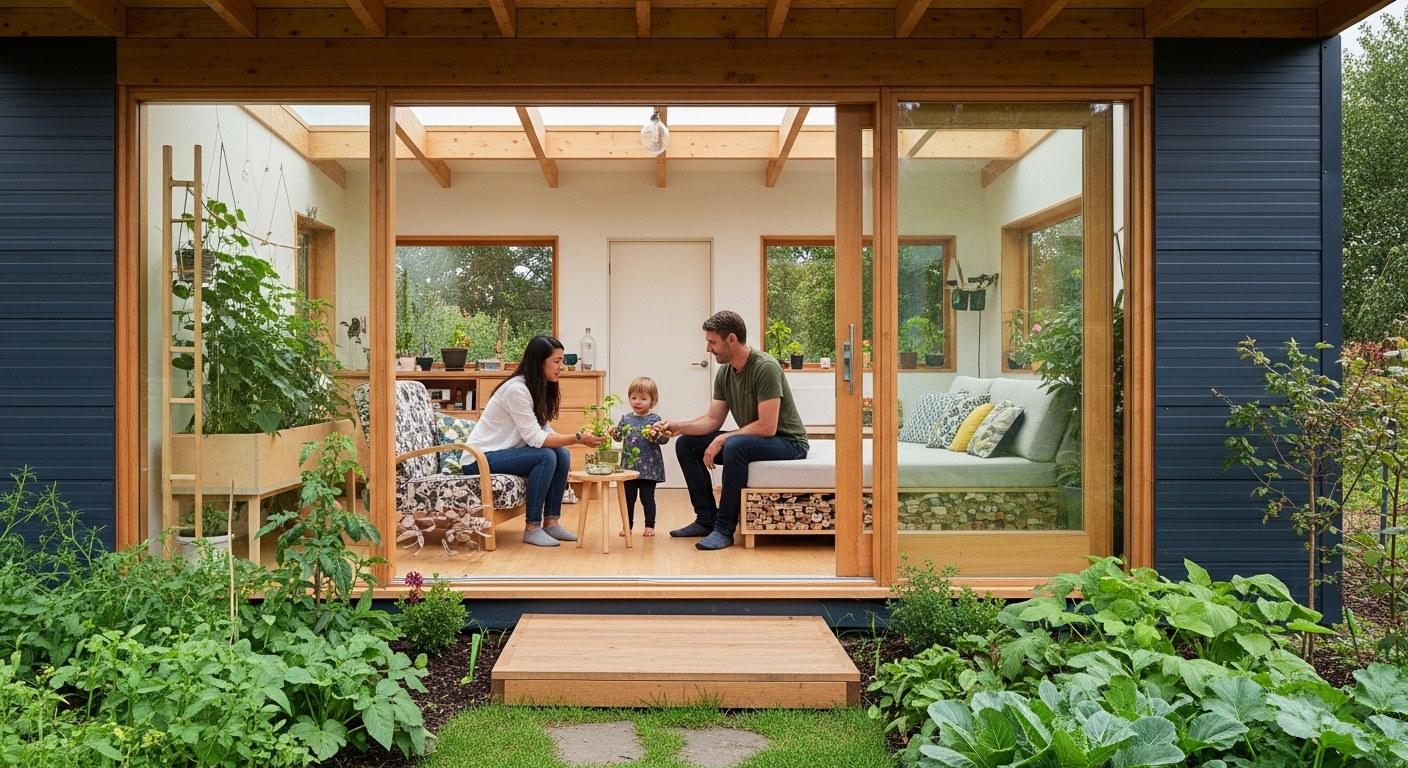In today’s fast-paced world, creating a sanctuary within our homes has become more crucial than ever. But what if that sanctuary could also be a force for good, contributing to a healthier planet? That’s the essence of the green home lifestyle – transforming your living space into an eco-friendly oasis. As environmental awareness grows, more people are seeking sustainable ways to reduce their carbon footprint and live in harmony with nature. This blog post explores essential green living tweaks that can help you cultivate a healthy haven while making a positive impact on the environment. From energy-efficient upgrades to mindful consumption habits, we’ll delve into practical strategies that anyone can implement. Prepare to discover how small changes can lead to significant benefits, creating a home that nurtures both your well-being and the planet.
Embrace Energy Efficiency
One of the most impactful ways to create a green home is by embracing energy efficiency. Start by switching to LED lighting, which uses up to 75% less energy and lasts much longer than traditional incandescent bulbs. Consider investing in smart thermostats that learn your heating and cooling preferences, automatically adjusting the temperature to save energy when you’re away or asleep. Sealing drafts around windows and doors can also significantly reduce energy waste, preventing heat loss in the winter and keeping your home cool in the summer. Furthermore, explore renewable energy options like solar panels, which can provide a clean and sustainable source of electricity for your home. According to a recent report, homes with solar panels can reduce their carbon footprint by up to 80%.
Another aspect of energy efficiency is choosing energy-efficient appliances. When it’s time to replace your refrigerator, washing machine, or dishwasher, look for models with the Energy Star label. These appliances meet strict energy efficiency guidelines set by the Environmental Protection Agency (EPA), ensuring that they consume less energy and water than standard models. Additionally, be mindful of phantom loads – the energy consumed by electronics when they’re turned off but still plugged in. Unplug chargers, TVs, and other devices when not in use, or use power strips to easily switch off multiple devices at once. Small changes like these can add up to significant energy savings over time.
Embracing energy efficiency is not only good for the environment but also for your wallet. By reducing your energy consumption, you can lower your utility bills and save money each month. It’s a win-win situation that benefits both your home and the planet. Start with small, manageable changes, and gradually incorporate more energy-efficient practices into your daily routine.
Water Conservation Strategies
Water is a precious resource, and conserving it is essential for creating a sustainable home. Begin by fixing any leaky faucets or toilets, as even small drips can waste significant amounts of water over time. Install low-flow showerheads and toilets, which use less water without sacrificing performance. When washing dishes, avoid letting the water run continuously; instead, fill the sink with soapy water and rinse dishes in a separate basin. Similarly, when brushing your teeth, turn off the tap while you’re brushing.
Outdoor water conservation is equally important. Consider installing a rain barrel to collect rainwater, which can be used to water your garden or wash your car. Choose drought-resistant plants for your landscaping, and water them deeply but less frequently to encourage strong root growth. Use a soaker hose or drip irrigation system to deliver water directly to the roots of your plants, minimizing water waste through evaporation. Additionally, be mindful of overwatering your lawn, as this can lead to runoff and wasted water. According to a study by the EPA, households can save up to 30% of their water consumption by implementing water-efficient practices.
Greywater systems, which recycle water from showers, sinks, and washing machines for non-potable uses like toilet flushing and irrigation, represent another advanced water conservation strategy. While they require a more significant upfront investment, they can substantially reduce your water consumption in the long run. Every drop counts when it comes to water conservation, and by implementing these strategies, you can make a significant impact on preserving this precious resource.
Mindful Consumption and Waste Reduction
Adopting a mindful approach to consumption and waste reduction is crucial for creating a truly green home. Start by reducing your reliance on single-use plastics, opting for reusable alternatives like water bottles, shopping bags, and food containers. When shopping, choose products with minimal packaging or those made from recycled materials. Support companies that prioritize sustainability and ethical sourcing. Consider buying in bulk to reduce packaging waste and save money. According to a recent survey, consumers are increasingly willing to pay more for eco-friendly products.
Composting is another effective way to reduce waste and enrich your garden soil. Food scraps, yard waste, and paper products can be composted in a backyard compost bin or through a municipal composting program. This not only reduces the amount of waste sent to landfills but also creates a nutrient-rich soil amendment for your plants. Additionally, embrace the principles of reduce, reuse, and recycle. Before throwing something away, consider whether it can be repaired, repurposed, or donated. Recycle materials properly by sorting them according to your local recycling guidelines. By being mindful of your consumption habits and waste generation, you can minimize your environmental impact and create a more sustainable home.
Furthermore, consider the impact of your purchasing decisions on the environment. Choose products made from sustainable materials, such as bamboo, cork, or recycled wood. Avoid products that contain harmful chemicals or toxins, which can pollute your home and the environment. Support local businesses and farmers markets to reduce transportation emissions and promote sustainable agriculture. By making conscious choices about what you buy and how you dispose of waste, you can create a greener and healthier home.

